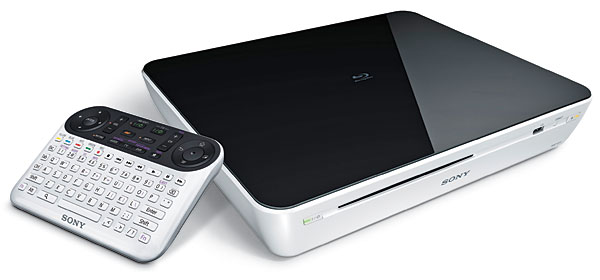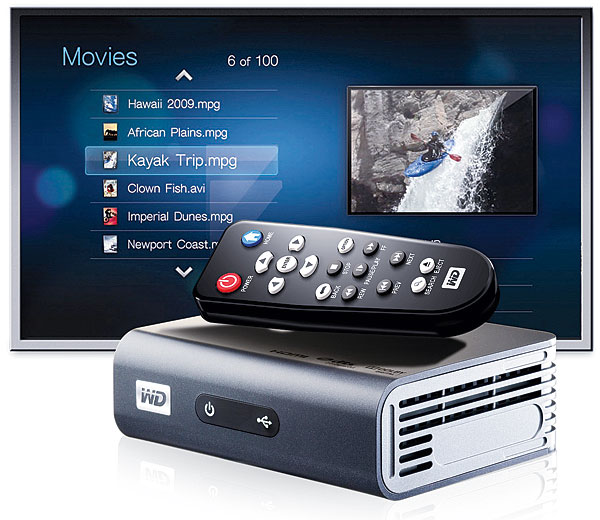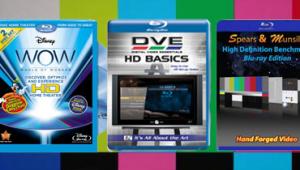Streaming for the Masses

Once upon a time, outside factors controlled when and where you could watch a TV show or feature film. Over the past 35 years, that’s evolved dramatically. The revolution began with the introduction of the VCR in 1976. Its ability to record and archive broadcast TV shows and movies on magnetic tape burst open the floodgates for entertainment in the home. Other formats followed, all the way up to our present-day high-density Blu-ray Discs. One thing they’ve all had in common, though, is their physical nature. That’s all changing now. Like it or not, we’re entering a transition phase from physical media to streaming and the cloud. Looks like a revolution all over again.
Streaming has certain advantages. It’s convenient, there are no late fees at the video store, and many content providers work on a pay-per-view business model, so you only pay for what you choose to watch. If you’re new to streaming, you probably have a boatload of questions about what you’ll need to get started, such as which equipment and connections to use and who to choose as your provider (or providers). Don’t worry; we’ve got the answers for you.
The Need for Speed
First and foremost, what you’ll need to start streaming is an Internet connection in your home, and I’m not talking about an AOL dial-up account. There are many variables in determining the ideal connection speed, including different compression formats and other vagaries specific to each network. But here are some rules of thumb.
To stream standard-definition content reliably, figure on a 3-megabit-per-second connection, although some users find a minimum of a 1-to-1.5-Mbps service to be acceptable. For 720p material, 5 Mbps will usually get the job done, but some find that 2.5 Mbps is enough. For 1080p video with Dolby Digital Plus audio, 8 Mbps is recommended, but the minimum threshold is as low as 4.5 Mbps. Bottom line: Faster is better. My ISP is Comcast, and I have the 12-Mbps plan, but according to DSL-Reports, I’m getting over 16 Mbps at a cost of $43 per month.

Once you have Internet access, you’ll have to figure out how to get the signal to your equipment. While many devices support wireless streaming, a hard-wired connection is the preferred choice. If you don’t want to pay an electrician to run Cat-5 wire throughout your home, most brick-and-mortar and online electronics stores offer a wide variety of home wireless routers, and they aren’t very difficult to set up. Be advised: The further you move away from the router location, the worse the signal becomes. For example, I get 6 Mbps when I test the speed of my wireless router in the same room, but when I move three rooms away to my home theater, the download speed drops to lower than 3 Mbps. That’s nearly a fivefold decrease versus wired, and it definitely affects the quality of the delivered content.
The Hardware
Over the past 24 months, there’s been an explosion of streaming devices hitting the market. The major standalone streaming set-top boxes (i.e., no disc player built in) include Apple TV, three different models from Roku, Boxee Box by D-Link, Seagate FreeAgent GoFlex TV, and Western Digital WD TV Live Plus HD. Prices range from $99 to $199. Output quality (720p, 1080p, and yes, even 3D) and applications vary by device, so you’ll need to do a little research before you buy.

If you’ve purchased a new HDTV or Blu-ray player in the past year, chances are it offers some package of streaming services. At CES 2011, a plethora of HDTVs and Blu-ray players were announced that offer many of the services I’ll expand upon later. One intriguing announcement came from Orb. The Orb BR is a Blu-ray Disc that can turn any BD-Live-enabled Blu-ray player into a media-streaming device. It doesn’t work alone and will need access to a computer somewhere on your home network running Orb Caster software. This may be the best BD-Live application yet.
Other components with streaming packages include TiVo Premiere (and Series 3) DVRs, game systems such as the PlayStation 3, Xbox 360, and Wii (standard-definition content only), Google TV, a home computer, or even a mobile device such as an iPhone, iPad, or Android phone. Finally, there’s your cable or satellite provider’s proprietary VOD (video on demand) services.
The Applications
Netflix: The Big Kahuna
With more than 23.6 million members in the United States and Canada, Netflix has revolutionized the way people rent and watch movies. In 1997, co-founder Reed Hastings envisioned the day when he could deliver movies over the Internet versus through the mail, which is why he named the company Netflix. Ten years later, it finally happened. While it started in baby steps by streaming to computers, in 2007 the company was set to release the Netflix Player. At the eleventh hour, Hastings chose a different approach and embedded its streaming video service in other devices.
Today, you’ll find Netflix in virtually every streaming-capable device on the market, but the company offers three different user interface experiences. The basic application is the most limited and requires you to have access to a computer (or smart phone) in order to add titles to your streaming queue. This limited app only lets you play or delete titles that are already in your queue.
Netflix’s second-tier application offers better functionality. While you can still search and add titles from your computer, this interface lets you add hundreds of popular titles to your Instant Queue from specific genres (Comedy, Drama, etc.). While this is an improvement, Netflix’s very latest iteration goes further. Its interface is outstanding, with a menu for suggested titles catered to your viewing habits, new arrivals, genres, and a new search function—finally. Unfortunately, this interface is only available on a limited number of platforms at this time (PS3, Apple TV, Roku) but will hopefully migrate to other devices through firmware updates.

Netflix is a subscription-based service with streaming-only plans that start at $7.99 per month. It also offers a variety of other plans that include one or more DVD/Blu-ray Discs mailed to your home starting at $9.99 per month. When the streaming service first launched, it only allowed standard-definition streams with stereo audio. Netflix has since added 720p HD, although the audio on most devices is still limited to stereo. The PS3, with 1080p streaming and Dolby Digital Plus audio, is the exception. Thankfully, Netflix plans to migrate this service to other platforms.
As you might expect, standard-def movies and TV shows don’t look very good when streamed, but then again, they don’t look very good ever. The 720p HD feeds are a vast improvement over SD, but you can still expect some macroblocking with fast-moving objects depending on network speeds and conditions. When I tested the new 1080p feeds via the PS3, they showed even further improvement, although the video doesn’t have the depth and detail you’d find on Blu-ray.
On the audio side, the stereo feeds aren’t a huge issue for older TV shows or comedies, but I wouldn’t want to watch Inception via streaming. Some movies are just made for Blu-ray. While the Dolby Digital Plus feed via the PS3 is a definite improvement, it’s not as robust as Blu-ray’s lossless tracks. Dialogue and effects don’t produce the “being in the room” experience that I’ve grown accustomed to.
VUDU: The King of Quality
VUDU was founded in 2004, but it wasn’t until 2007 that the company signed deals with movie studios to deliver nearly 5,000 films over the Internet. Originally, the only way to receive VUDU was from its own set-top box, but the company changed directions in 2009 when LG integrated the service into its HDTVs. By January 2010, VUDU got out of the hardware business entirely and began providing its service exclusively through select HDTVs, Blu-ray players, and the PS3. But that wasn’t the only change the company would experience. On February 22, 2010, Walmart announced it was acquiring the company, providing VUDU with major financial backing that bodes well for its future.




























































